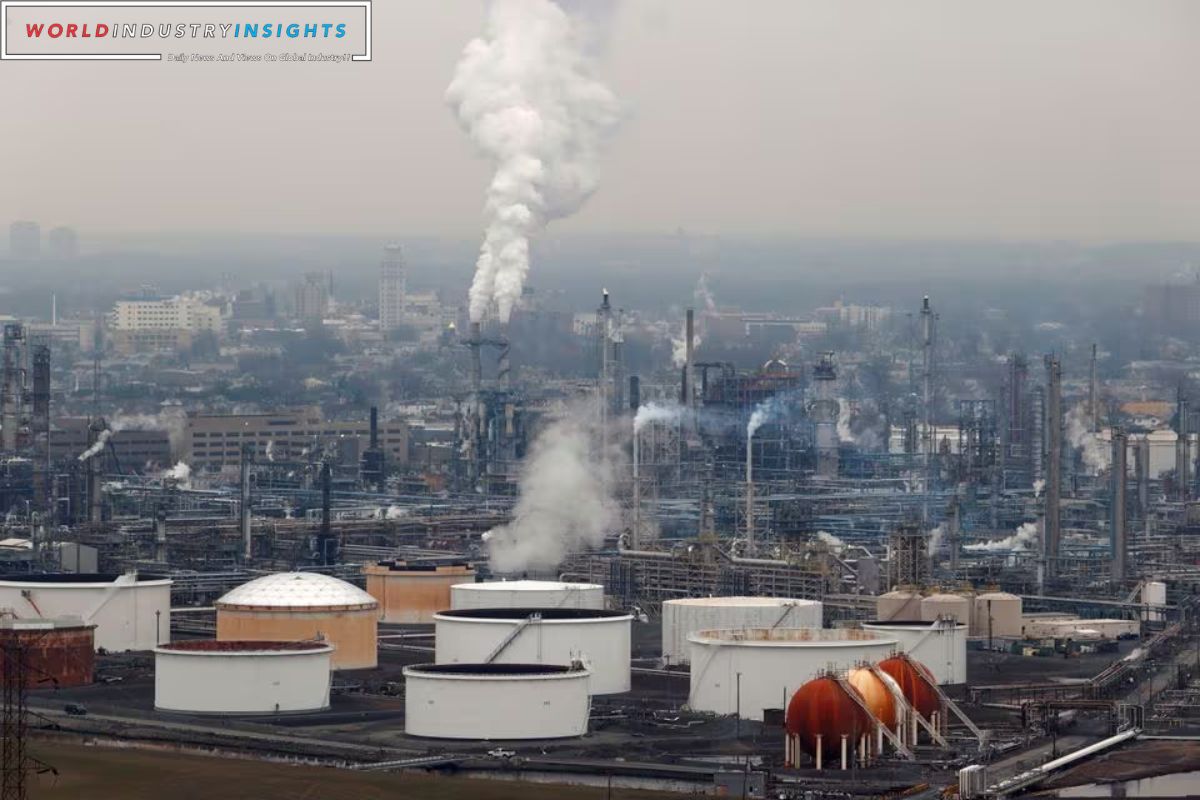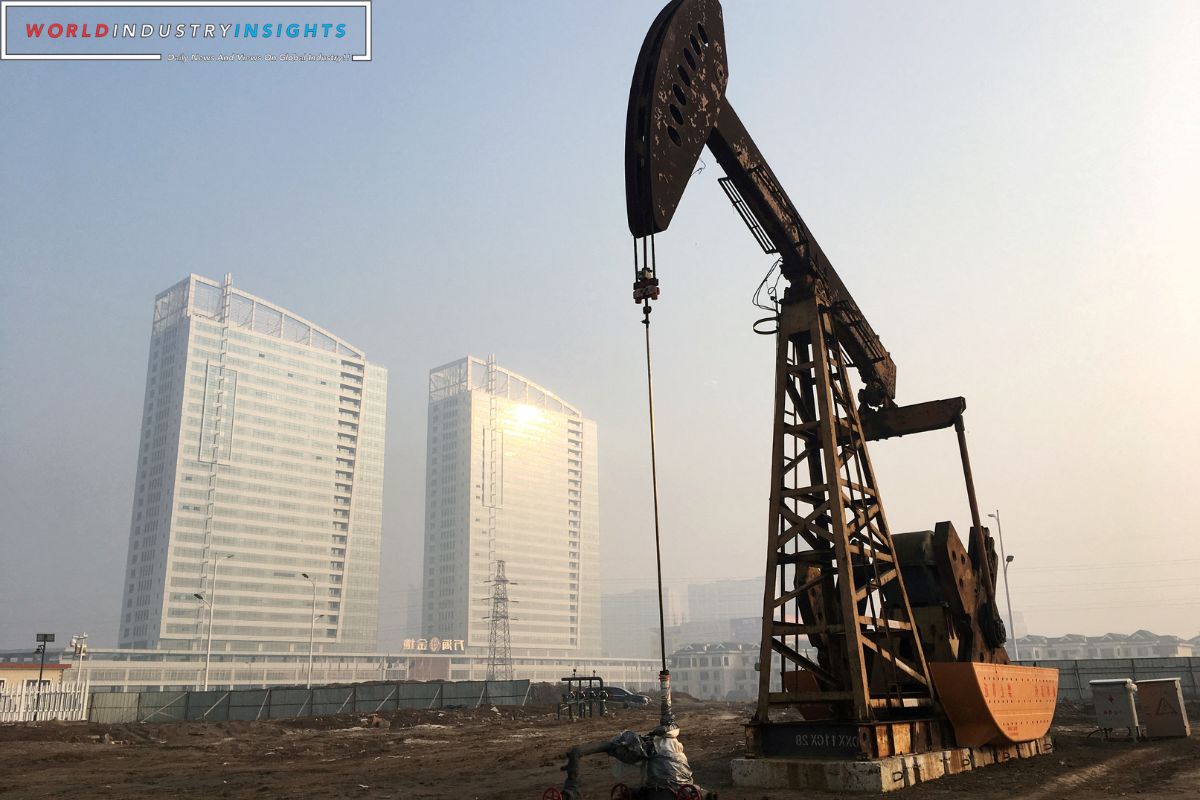Oil Prices in a Tango: In a plot twist for oil markets, prices are on the brink of securing their first weekly surge in two months, fueled by an optimistic narrative spun by the International Energy Agency (IEA) and a faltering dollar. Brent futures inched up by 21 cents, settling at $76.82 a barrel, while U.S. West Texas Intermediate (WTI) crude mirrored the sentiment with a 20-cent uptick to reach $71.78. Both benchmarks now set the stage for a cautiously optimistic weekly gain.
The mid-week revelation from the U.S. Federal Reserve, hinting at a probable reduction in borrowing costs in the upcoming year, injected a considerable dose of optimism into oil prices. Kelvin Wong, an astute analyst at OANDA in Singapore, mused about the potential for a ‘demand pull,’ attributing the phenomenon to improved liquidity conditions following the Fed’s pivot toward a more dovish stance.
Playing a pivotal role in this unfolding narrative is the enfeebled dollar, which touched a four-month nadir on Thursday. The U.S. central bank’s indication of the end of interest rate hikes and the prospect of lower borrowing costs in 2024 served as the catalyst for this downward trajectory. A softer dollar, as history tells us, renders dollar-denominated oil more enticing for foreign buyers, a fact not lost on the discerning players in the oil market.
While the European Central Bank pushed back against anticipations of immediate interest rate cuts, steadfastly affirming its commitment to maintaining record-high borrowing costs despite dwindling inflation expectations, the overall sentiment in the oil market remained buoyant.
Also Read: Oil Prices Find a Fresh Groove: Riding High on Fed Signals and Crude Withdrawals
Adding more fuel to the optimism fire was the IEA’s monthly report, forecasting a 1.1 million barrels per day (bpd) uptick in world oil consumption in 2024. This projection, marking a 130,000 bpd increase from the previous outlook, was credited to a sanguine forecast for U.S. demand and more palatable oil prices. However, it’s worth noting that the IEA’s projection falls short of the Organization of the Petroleum Exporting Countries’ (OPEC) ambitious demand growth forecast of 2.25 million bpd for the same period.
On the other side of the seesaw, China, the world’s second-largest oil consumer, threw in some challenges with lackluster economic data in recent weeks. The country’s statistics bureau painted a picture of declining refinery runs in November, hitting their lowest ebb since the inception of 2023. Margin pressures on non-state-owned refiners prompted production cutbacks, and tepid diesel consumption cast a shadow on national fuel demand.
Despite the hiccups in China’s property market, a silver lining emerged in the data, showcasing a performance in industrial output and retail sales that surpassed expectations. This positive revelation injected a dose of relief into market sentiment amid China’s gradual post-COVID economic convalescence. As the curtain falls on the week, oil markets are caught in a delicate dance, swaying to the tunes of global economic factors and the intricate choreography of market dynamics.
Our Reader’s Queries
What’s the price of a barrel of oil today?
The latest market update shows a decline in WTI Crude at 70.95-2.86, Brent Crude at 76.37-2.39, and Murban Crude at 76.07-2.67. However, Natural Gas has seen a slight increase at 2.943+0.050. Gasoline has also experienced a dip in the last 24 hours at 2.040-0.066. These fluctuations in the energy market can have a significant impact on various industries and the economy as a whole. It’s important to stay informed and keep a close eye on these changes.
What is the price of oil right now?
Get the latest update on oil prices today! Brent crude oil is currently priced at $77.86 per barrel, while WTI crude oil is at $72.43 per barrel. It’s worth noting that oil prices are typically quoted in USD globally, not just in the US or when referring to US crude oil. Stay informed on the real-time prices of these valuable commodities.
Why is oil in contango?
The term “contango” refers to the situation where the prices of oil futures contracts that expire in the coming months are higher than the current prices. For instance, the futures contracts for West Texas Intermediate crude, which is the standard grade in the U.S. oil market, that expire next month are currently trading at $72.11 per barrel.
Why is it called contango?
Contango, a term believed to have originated in 19th century England, is thought to be a corruption of “continuation”, “continue” or “contingent”. In the past, on the London Stock Exchange, contango referred to a fee paid by a buyer to a seller when the buyer wished to defer settlement of the trade they had agreed upon.


